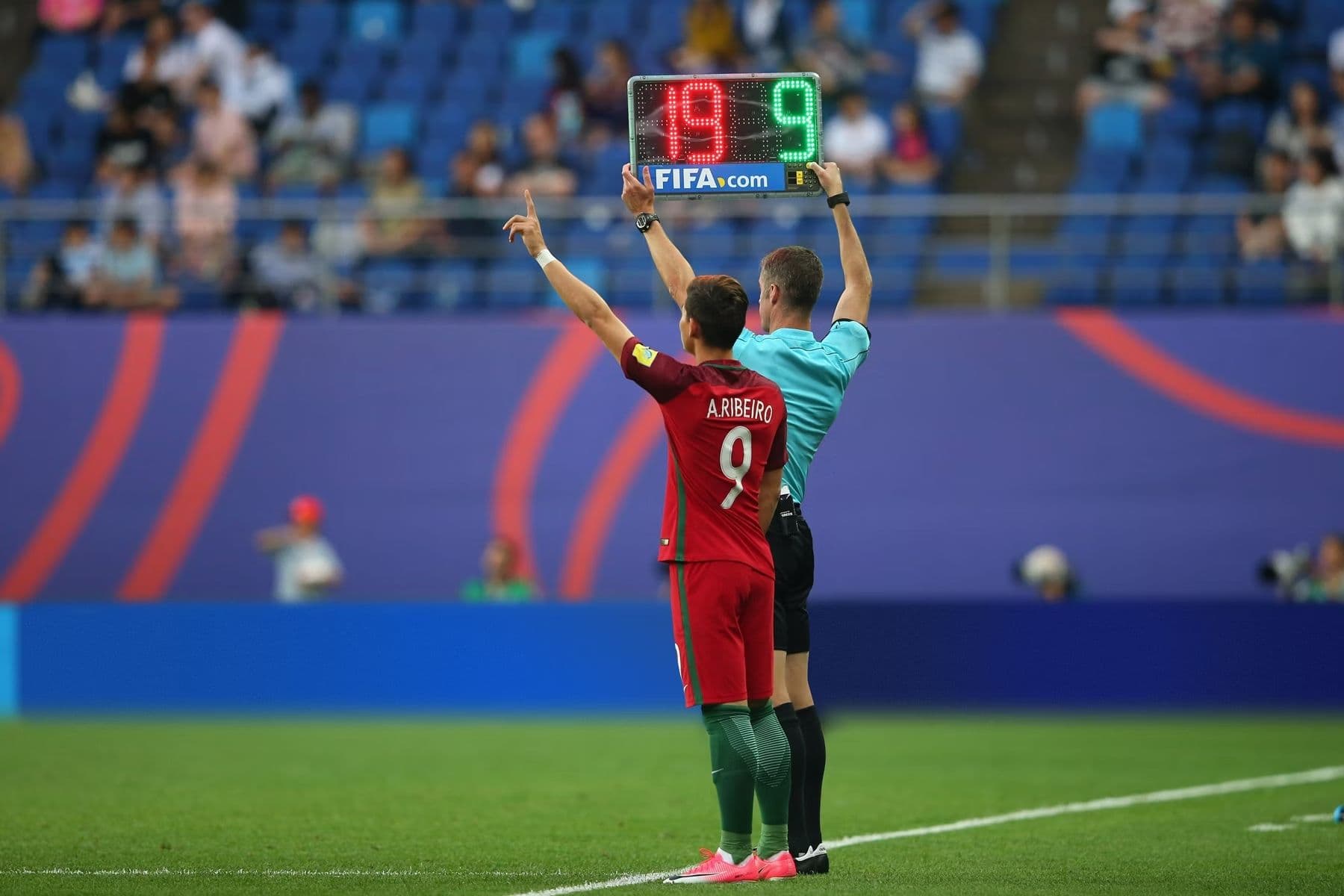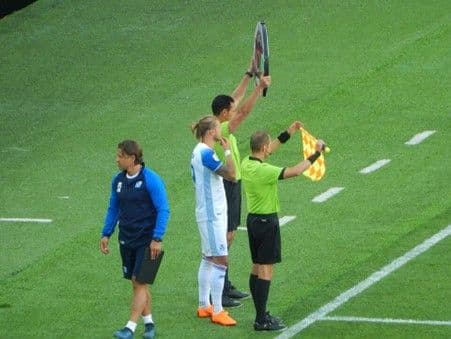Football
Current Football Substitution Rules: How Many Subs Can Be Made?
The short answer? It depends. Sportsboom explains the intricacies of subs in our in-depth guide.

Image Credit: Alex Livesey - FIFA
Substition rules in football have well evolved in recent times. This is due to the overall progression of player health and wellbeing.
For decades, teams were only allowed to make three substitutions per match.
With a move from three to five substitutions in professional football, there has been a marked emphasis on player health, safety, and strategic gameplay.
SportsBoom investigates football substitution rules to see how many subs can be made.
We also look at the changes in the football substitution rules over the past 161 years.

Image Credits: Krugerr
How many football substitutions can be made?
Since 2020, five substitutes can be made in football. However, this number used to be three, and if we go back a few decades more, there used to be none allowed.
The first use of a substitute in international football was on 15 April 1889, in the match between Wales and Scotland at Wrexham, when the original Welsh goalkeeper, Jim Trainer, failed to arrive.
With the goalkeeper being one of the most important positions in football, the substitution rules began to evolve.
In English football, substitutions were officially added to the Laws of the Game in 1958.
From 1863, when association football was codified, to 1958, the sport was played with no changes permitted, with occasional exceptions in cases of extreme injury or players not arriving to matches on time.
While the laws of football have changed a lot over the years, substitutions were capped at three per team.
Substitutes in World Cup Finals matches were not allowed until the 1970 tournament in Mexico.
By 1988, the substitution rule had been extended further: managers could name a squad of 16 players for each game, with two of those five substitutes allowed to enter the pitch.

Image Credits: Fanny Schertzer
When were the most recent changes to the substitution rules in football?
In 2020, during the Coronavirus pandemic, the world’s football associations reviewed the substitution laws. FIFA increased the number of subs and allowed up to five substitutes per game.
Fixture congestion, caused by chaos in the schedule, meant that teams were regularly playing three games per week.
FIFA motioned to the International Football Association Board (IFAB), which ratified football's rules that five substitutes be allowed, but only during COVID-19. The IFAB agreed.
However, the five-substitute rule in football has now been made permanent.

Image Credits: Oleg Bkhambri
Current Football Substitution Rules
In a standard 90-minute professional football match, a team can make a maximum of five substitutions, but only on three separate occasions and an added opportunity at halftime.
There are currently nine players named on the bench.
These changes aim to give players a better chance of recovery and ensure a high-level of play during the match because of fixture congestion and better player welfare.
If a player is sent off, they cannot be replaced.
Does Football Allow for Concussion Substitutes?
The increasing awareness around player safety, particularly concerns about head injuries, has seen concussion substitutions introduced to football.
However, a concussion substitution does not count towards the number of substitutions allowed in a match.
When the number of named substitutes matches the maximum number of substitutions allowed, the concussion substitute could even be a player previously substituted out of the match.
There were hopes that temporary concussion substitutes would allow a player to be examined off the pitch and replaced by a colleague for a specific timeframe, like in rugby union.
However, proposals for a trial in the English Premier League have so far been rejected.

Image Credits: Boston University Center for the Study of Traumatic Encephalopathy
Football substitution rules: Conclusion
In conclusion, it is safe to assume football substitution rules will change further because of advances in medical science and lawsuits around brain injuries, specifically Chronic traumatic encephalopathy (CTE).
CTE has changed the way modern sports deal with head injuries.
Most documented cases have occurred in athletes involved in striking-based combat sports, such as boxing, kickboxing, mixed martial arts, and Muay Thai.
CTE is documented in other contact sports such as American football, Rugby league, Rugby union, Australian rules football, professional wrestling, and ice hockey.
It is also an issue in cheerleading and association football, mainly because of "heading" the ball rather than player contact.
For more guides, the latest news, and exclusive interviews in the world of football, make sure to stay connected with Sportsboom.com.

Kaylan Geekie is a sports fanatic. He attended Durban High School before moving to Scotland, where he lived for 15 years. During his time in the United Kingdom, Kaylan graduated with a first-class BA Honours Degree in Sports Journalism at the University of the West of Scotland. Kaylan worked for nine years as the Match-Day Editor of SuperXV.com, reporting on Super Rugby, The Rugby Championship, the 2015 Men's Rugby World Cup and the 2017 British & Irish Lions series for the website.